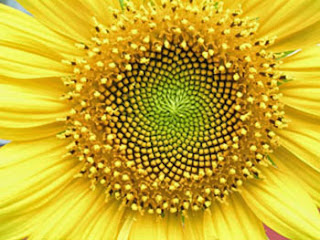Aexander Calder and the Phi Proportion
Alexander Calder was a famous artist that used shapes that are 'biomorphic'. They recall shapes found in nature such as leaves, flowers, clouds.
 |
| Shadbush leaves in Autumn - Calder's inspiration? |
Calder's other interests included physics, astronomy and kinetics. He was inspired by color and composition and Piet Mondrian's paintings.
 |
| by Piet Mondrian, this incorporates Phi proportion |
In some of Calder's signature hanging mobiles, he arranged colorful natural shapes in a mathematical pattern found in Nature called the Fibonacci sequence which is based on the proportion known as PHI (1:1.618).
In the Calder mobile below, called, 'Back, White and Ten Red', the shapes are arranged in the Fibonacci sequence, 1, 1, 2, 3, 5.....(each number is the sum of the two preceding it).
Perhaps he got this idea from Mondrian who also used Phi in his famous artworks.
 |
| Fibonacci sequence in Calder's 'Black, White and Ten Red', 1957 |
The mobile has each number as a separate hanging unit on the mobile like this:
 |
| source: St Mary's College, Maryland |
Calder and Mondrian knew about Phi, the Golden Proportion, and now we all are learning about it!










Calder lived in Croton on Hudson, NY
ReplyDelete